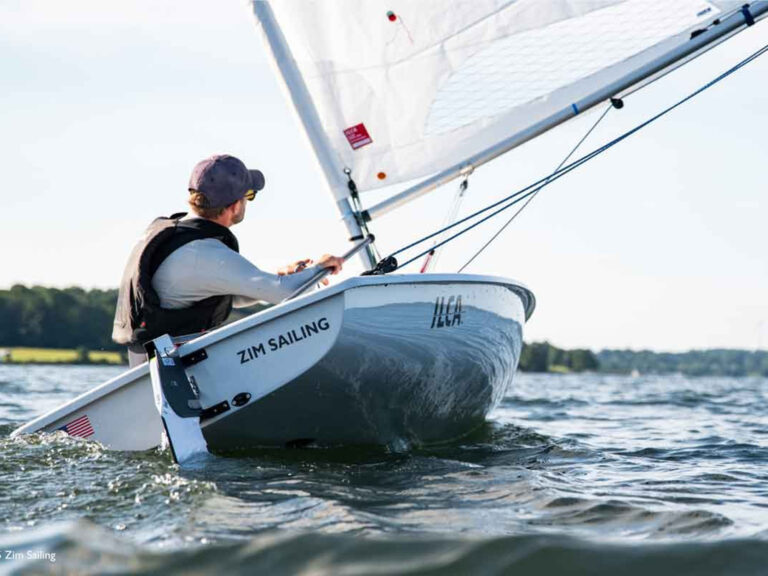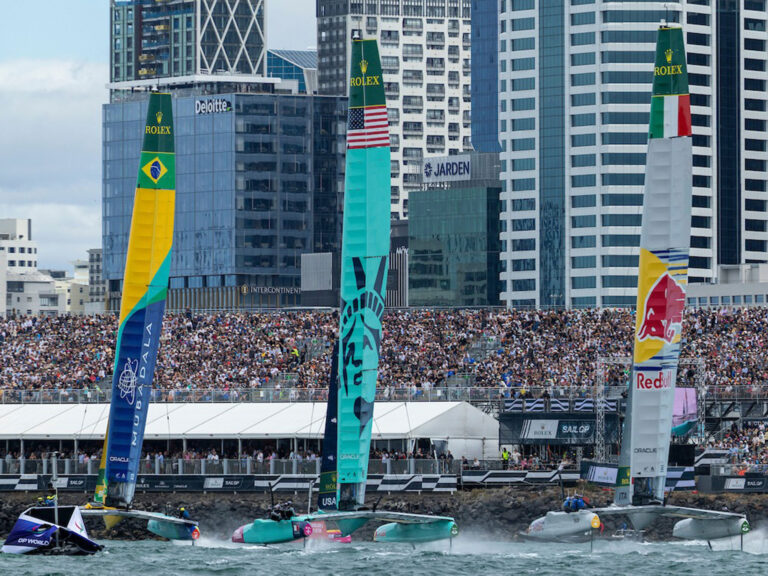
Gunboat 66 368
Nora and Bruce Slayden got into sailing late. A few years after buying their first boat, the couple decided a monohull wasn’t the best way to make up for lost time. “We were anchored in the bight at Cabo San Lucas [Mexico],” says Bruce Slayden. “There were waves coming around the point, jet skis going all around 16 hours a day, and we were rolling gunwale to gunwale most of the day for a few days. My wife said either get me into a marina or I’m going home.”
They considered a catamaran initially, but being novices, went the traditional route. With a few miles under their belts, and a chance to review that decision, they reversed course. In 2005, they bought a Gunboat 48. A used 62 followed soon after and they had a 78 on order when another owned backed out of a nearly finished 66.
While the Slaydens are primarily cruising sailors-and the Gunboats do not spare much when it comes to creature comforts-they raced the 62 occasionally and plan to do the same with the 66.
“We became a lot more adept at handling the boat,” says Bruce Slayden of what they gained from entering regattas. “Racing against other boats, your knowledge expands exponentially as well as your comfort at handling the boat.”
Sugar Daddy made its competitive debut at the St. Maarten Heineken Regatta in March and took line honors among the five-boat Gunboat fleet in both races.
“The 62 is smooth, but the 66 has less tendency to pack the bows. It drives through waves more powerfully,” says Bruce Slayden. “In the first race, a little over 25 knots was our top speed. We were passing 80-foot Swans with the second reef in and we were going upwind anywhere between 10 and 17 knots.”
That top speed still leaves the Slaydens with some work to do to top their old boat, which hit 28.5 knots on a passage from Newport to the Caribbean.
According to Gunboat founder Peter Johnstone, the differences between the 62 and the 66 go beyond the added length. The first 62 was a fairly spartan family cruiser. “As more owners sought us out to build a copy of the first 62, they kept adding more accommodation and systems,” says Johnstone. “I looked at the requirements for the next four Gunboat 62 customers and felt that we needed to go larger to deliver the Gunboat performance.”
The added length allows for four en-suite staterooms and separate crew quarters. By moving back the aft crossbeam, the main living spaces gained 6 feet.
“This boat has the floor plan that we were going to order for the 78,” says Bruce Slayden. “We’re ecstatic with it.”
After the Heineken Regatta, the Slaydens were headed through the Panama Canal for a return engagement with the Pacific; Australia and a year cruising out of Sydney were looming on the not-too-distant horizon.
Technical Highlights
LOA 66′
LWL 62′
Beam 28’2″
Draft (board down/up) 8’6″/2’2″
DSPL 34,000 lbs.
Sail Area (u/d) 2,614 sq. ft./
4,812 sq. ft.
Designer Morrelli & Melvin
Builder Gunboat Yard, South Africa
Sails Quantum Sails South Africa
Mast Marstrom
Rigging Smart Rigging/BSI
Deck Hardware Facnor, Lewmar,
Harken, Equiplite, and Karver
Cordage Marlow
www.gunboat.com





